Previously on Mountain Beltway, we’ve examined the Neoproterozoic Miette Group of the Canadian Rockies by looking at its finer-grained strata.
Today, It’s going to get a bit coarser.
There’s a nice roadcut in Miette gritstone (coarse sandstone and mudrock with rounded pebble conglomerate) on the Trans-Canada Highway just east of the British Columbia / Alberta border. Aaron Barth and I GigaPanned it last summer:
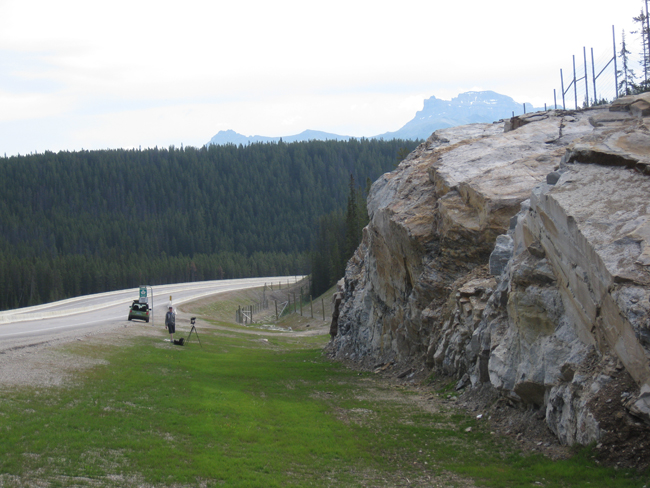
Here’s the resulting image:
As you explore it, you will get plenty of good looks at the “grit”:


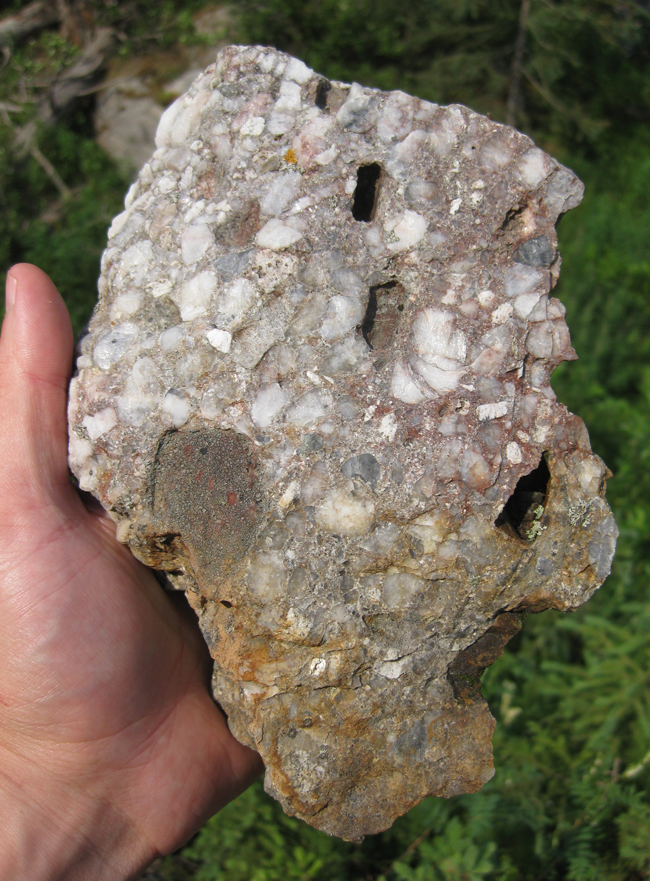
There is also a nice example or two of graded bedding, a sedimentary structure with a gradational change in grain size, bottom to top through a bed:

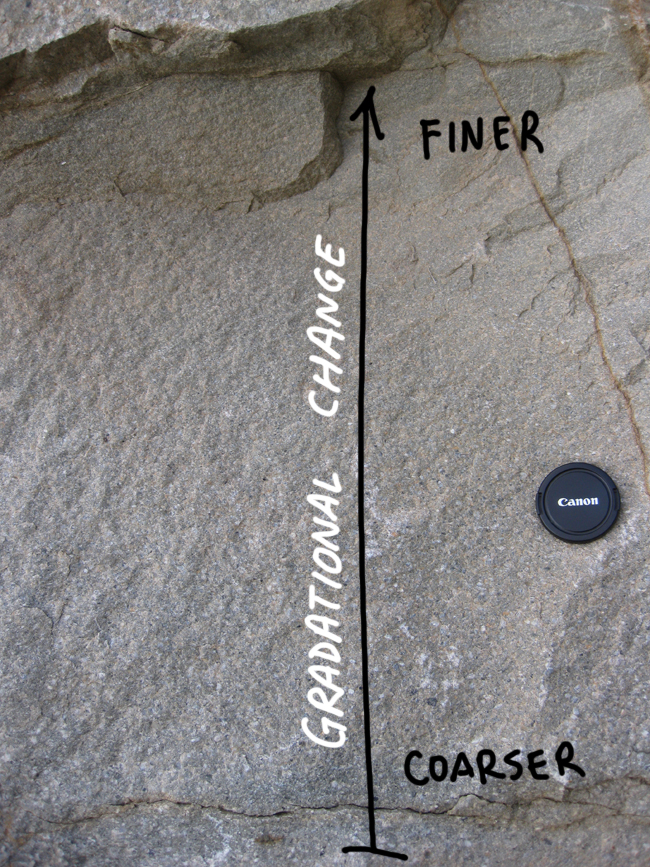
Elsewhere, you can see two other striking features:
- mudchip rip-up clasts (dark, angular chunks), and
- arcuate-bottomed contacts between coarser upper layers and finer lower layers:
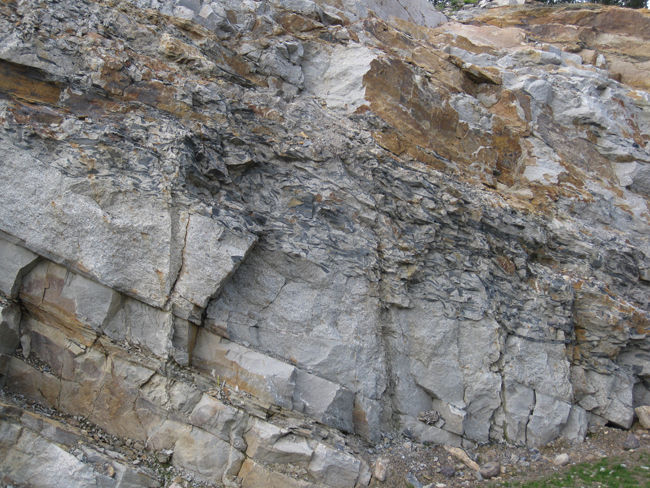

Let’s consider the mudchips first:

Mud is made out of small particles, mainly clay. As such, it tends to remain in suspension in the water column if the water is agitated (energetic). It only gets deposited if the water is really calm. As such, these mudchips tell us about calm-water deposition.
But they are not mud layers, they are chunks of mud, and they are angular, and they are surrounded by “grit”…
Clay is more-self-cohesive than sand (dominated by quartz, say). When a pre-existing deposit of mud gets blasted by a powerful current (one capable of transporting pebbles, for instance), the mud rips up in flakey chunks. These pliable chunks then become sedimentary particles in their own right, tumbled along with the new stuff (whatever this interloper current dragged in).
When the current wanes in energy, the mudchips and pebbles drop out together, a mixed deposit:
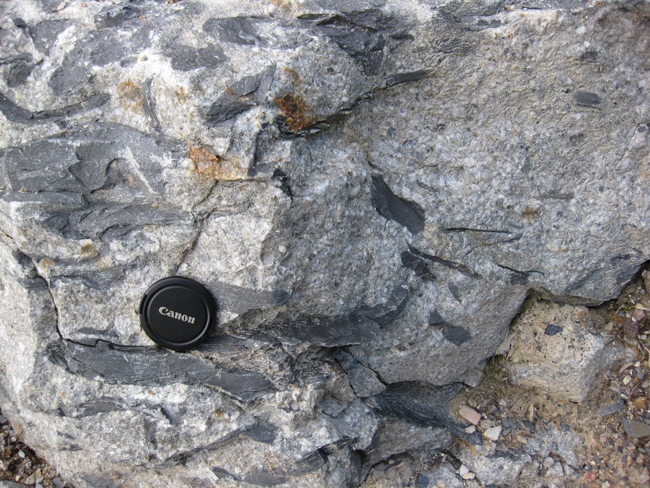
Next, consider how the arcuate (concave-up) shape of the cross-bedding is mimicked along the contact between lower (earlier) finer-grained strata and upper (younger) coarser-grained strata, like right here:
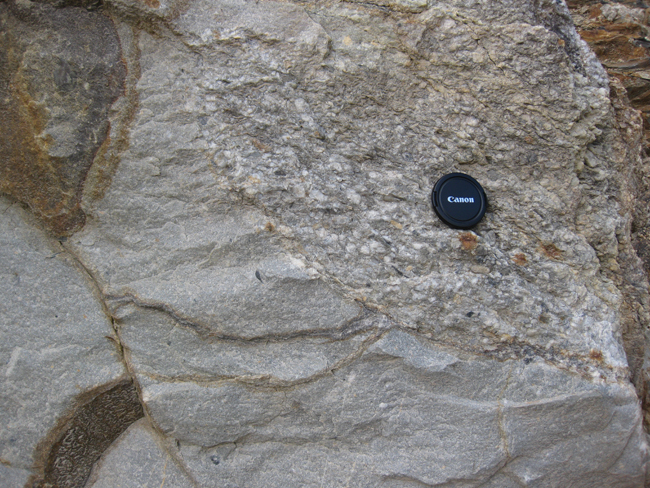
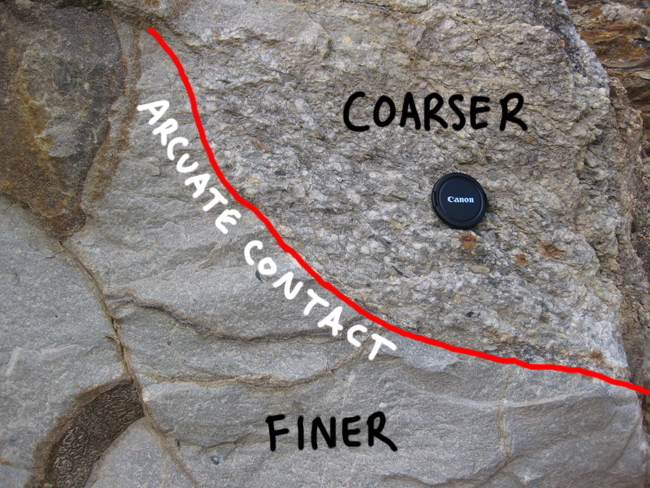
I interpret that as evidence of scouring in the depositional environment. As with the mudchip rip-ups, the story is one of changing water current strength over time. At one point, a moderate current deposited finer sand, and then the energy of the water got jacked up (a storm, an avulsing river) and the water switched from depositing to eroding these easy-to-move smaller grains. As the current energy dropped again, the bigger stuff it was carrying filled in the hole that had been eroded in the older deposit.

In other words, these are channel forms, trough-like scours into the pre-existing sedimentary deposits, then filled with the detritus that the scouring current carried in.
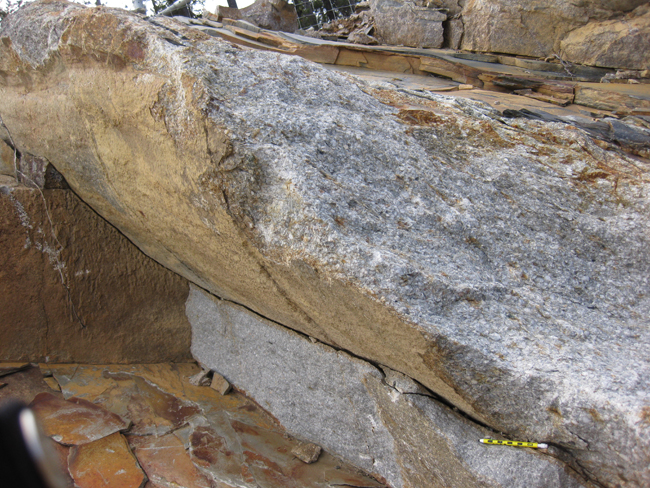
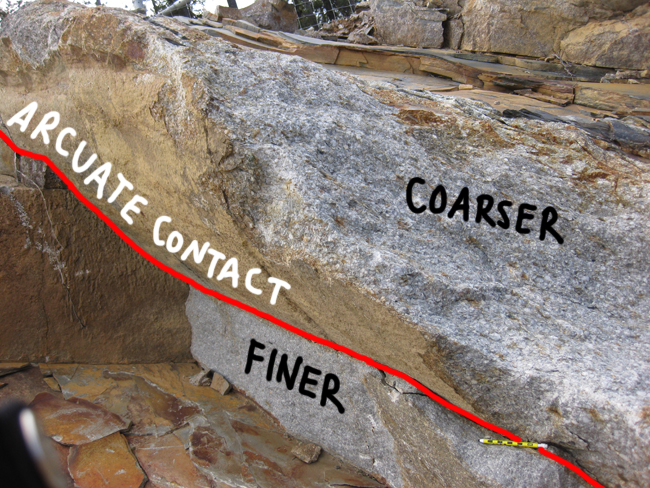
An animated GIF can impart some perspective on how this arcuate contact weathers out in three dimensions:

A closer look at the bottom of the incision:
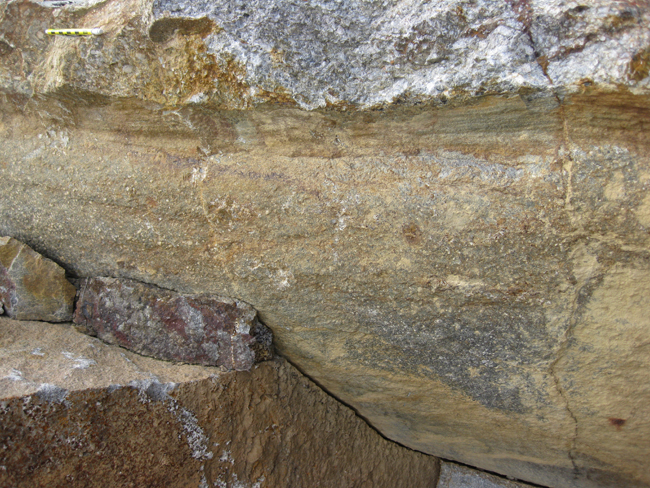
There is also evidence in the outcrop of directional currents in the depositional environment. Here are several nice examples of cross-bedding:

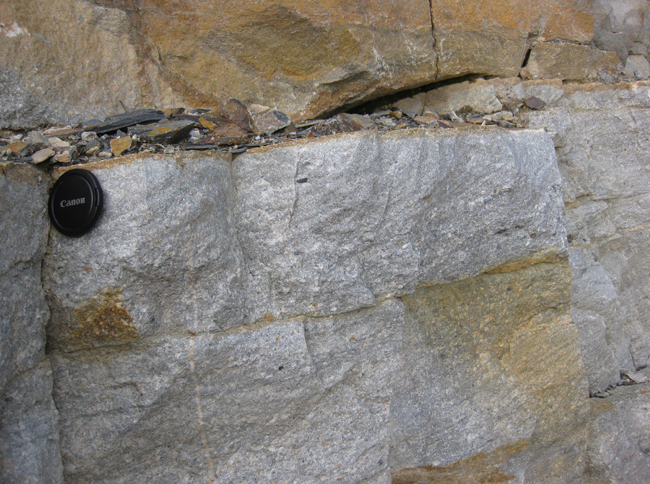
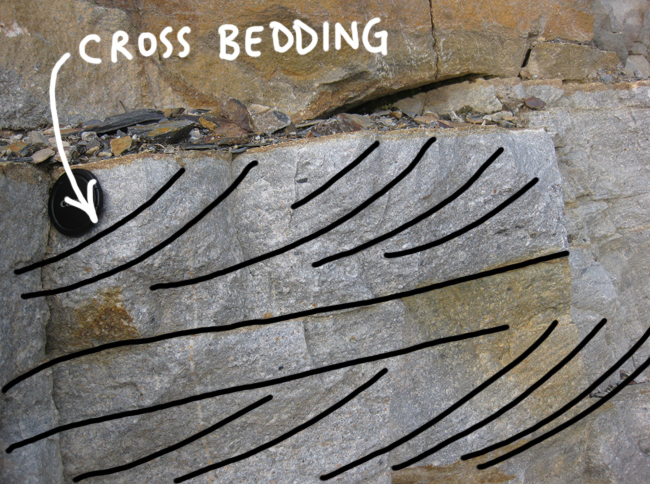
In this case, the water currents were moving from the right side of the photo toward the left, depositing sand in the slightly-less-energetic waters downstream of a migrating ripple (bedform).
Lastly, the Miette shows in some places the presence of “outsized clasts,” really big chunks mixed in with the relatively fine “grit.” Here’s an example, from about two miles east of the site above, right near the start of the Icefields Parkway:


It’s hard to tell a story of waxing and waning currents of water when something like that is staring you in the face.
These outsized clasts (boulders, essentially) are so much bigger than the rest of the deposit that it’s hard to imagine how they could co-exist without multiple factors influencing the deposition. They could potentially be interpreted as “dropstones,” which are iceberg-rafted chunks. Glacial ice is capable of supporting much larger particles than liquid water, and when a glacier calves, its icebergs float away with an internal sedimentary load that could include big boulders. When the iceberg melts, the boulder drops into the (water-deposited) finer sediment below. Because of its different mode of transport, it fails to “match” the character of the local sedimentary deposit.
These putative dropstones could be evidence of the Snowball Earth glaciations, which froze a significant portion of Earth’s surface during the Neoproterozoic.

Discussion. I’d like to offer an alternative interpretation of the putative dropstone. You’ve demonstrated with ample evidence that the matrix and depositional environment of this outsized clast is a high-energy deposit–probably fluvial–with great erosive power: rip-up clasts, coarse grain size (grit and pebbles), high relief scour-and-fill features. This seems to me an unlikely setting for floating icebergs, which might be more comfortable in a proglacial lake, a fiord, or sea, the sort of setting where calmer-water deposits would dominate: clays, silts, etc., into which the addition of a boulder-sized clast like this would be truly anomalous.
Instead, I’d envision a big, angular clast like this, in a high-energy deposit, to be the result of riverbank collapse, undercutting of a stream-side rock outcrop, or perhaps entrainment of landslide material. If this is a high-energy fluvial flood deposit, it may well have occurred during a torrential rainfall or spring melt event (consistent with the Snowball Earth scenario), when landslides along a presumably unvegetated river valley would have been likely.
Great photos, as usual!
You and Brian Romans think alike, Howard – He made the same statement via Twitter a few hours ago. Thanks!
Dropstones? Or Bank-collapse breccia? The argillaceous clast looks a tad too angular to have been a dropstone. Perhaps a short transport distance in a debris flow. Is the surrounding grit graded, or massive? Facies Sg, or facies Sm (to use the “S” facies designations modified from those proposed by Miall et al a long time ago) Sg is a waning-current facies, Sm is a wholesale dumping…which can also carry bank collapse a short distance.
I replied from the email without seeing that there were other replies! Seems that great minds think alike….
….and submitting this comment to activate the follow-up.